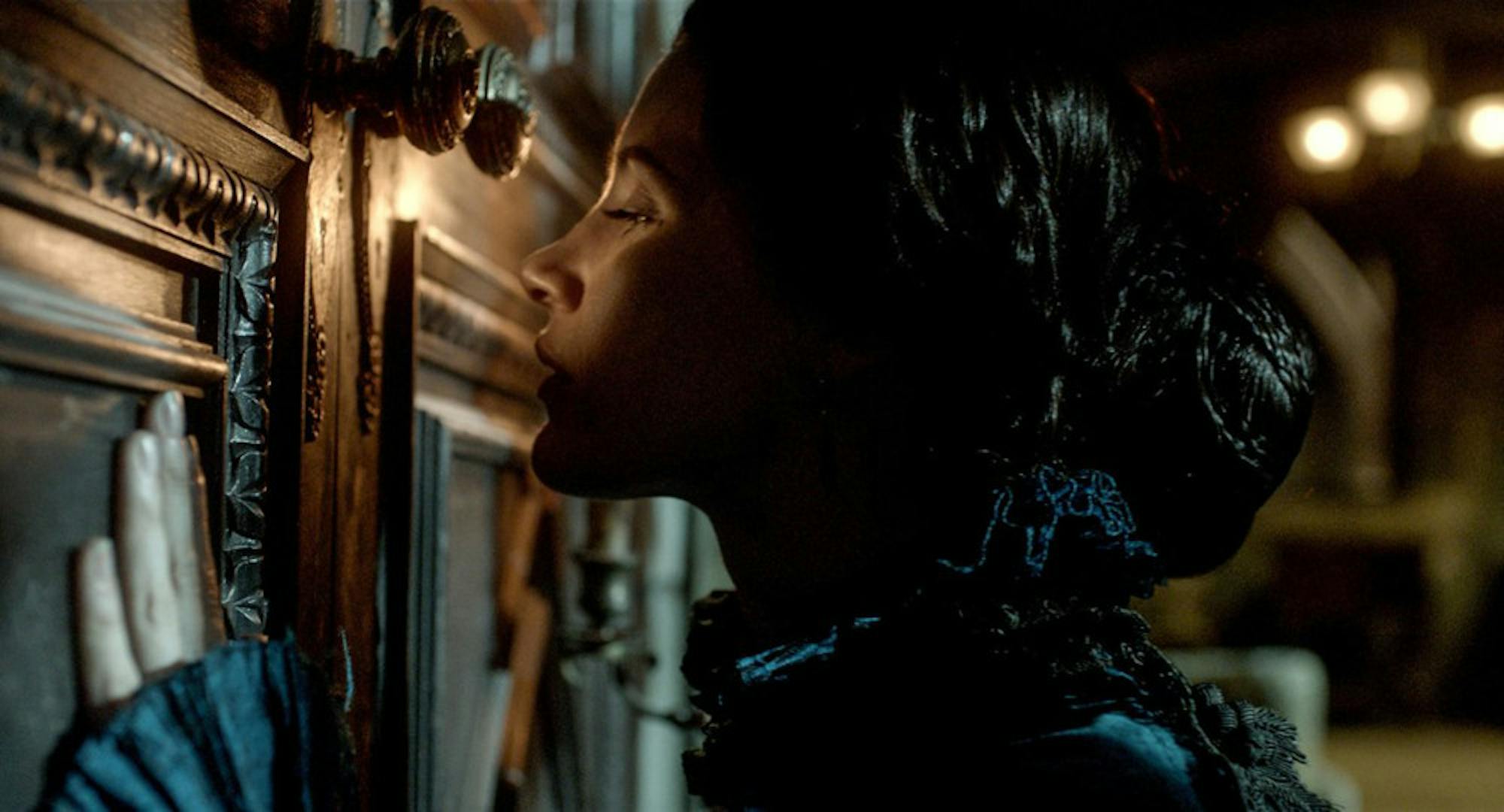It must be hard being Guillermo del Toro. Between the immense critical success of his Spanish-language dark fantasy “Pan’s Labyrinth” (2006) and the more mainstream commercial success of his American action films like “Pacific Rim” (2013), the director has amassed a following of the most rabid breeds of film fans: science fiction, fantasy and art horror lovers. Now, he has dutifully attempted the impossible task of appealing to each of these factions and their high expectations simultaneously in his latest release, the Gothic romantic horror film “Crimson Peak” (2015). And, as with any impossible task, the result is not a success. The poor thing never stood a chance.
Although visually stunning and well-cast, the film is burdened by deep issues that appear to stem from del Toro's desire to please and his inability to execute. Like the work of a stressed multi-tasker, everything is done haphazardly and half-heartedly. The young protagonist Edith Cushing (Mia Wasikowska) occupies both the role of horror damsel and romantic heroine. After the murder of her father, she is swept away by the dark and mysterious Thomas Sharpe (Tom Hiddleston) and his sister Lucille (Jessica Chastain) to the dilapidated, Brontë-esque Allerdale Hall. This reads like a straightforward English Gothic romance, but a number of American horror elements are inserted throughout, including paranormal investigation and the trope of the blonde, shrieking lead. The resulting effect is more distracting than interesting. Even with the jolts of violence that cut away from the established atmosphere and presentation of gory, monstrous ghosts, the film doesn’t provide many scares or even a lasting impression of dread. It tries its very hardest to be suspenseful, frightening and romantically intriguing but fails on all three counts.
In a 2012 interview about his then-upcoming projects, del Toro told Deadline that "Crimson Peak" was "a very set-oriented, classical, but at the same time modern, take on the ghost story. It [would] allow [him] to play with the conventions of the genre [he knew and loved] and at the same time subvert the old rules." The conventions of both the “ghost story” and Gothic romance genres are clear as day throughout the film, but subversion is much harder to come by. The most progressive aspect of Edith’s character is that she wears glasses and writes occasionally. She is introduced as a writer of ghost stories who has been pigeonholed into the romance genre because of her gender, but this supposedly feminist detail is undermined by the fact that her financial support comes from her father and a number of other male characters. Her battle with Lady Sharpe over Thomas’ love is also decidedly conventional, unless you consider incest plotlines subversive.
Genre fans will recognize nods to many classic scenes, including the final snowy showdown of Stanley Kubrick’s “The Shining” (1980) and Gary Oldman’s cobblestone stroll in Francis Ford Coppola’s “Dracula” (1992). Although these homages can be fun references to a world outside that of the film, they are often as distracting as the sudden jolts of violence. One stretch of dialogue in "Crimson Peak" between Edith and Thomas about his departure is pulled almost directly from Charlotte Brontë’s classic Gothic novel “Jane Eyre” (1847), which was recently readapted for film and also stars Wasikowska. This overwhelming reliance on reference and established tropes becomes laughable when audience members can pick out the origins of the film's constituent parts over and over. It teeters on the edge of losing its own identity completely.
In an attempt to be audience-friendly, “Crimson Peak” also over-explains almost everything. Much of the dialogue is stilted, the exposition is frustratingly heavy-handed and not much room is granted for nuance. For example, the Sharpes constantly emphasize the red clay beneath Allerdale Hall (blood!) and the delicacy of beautiful things (Edith!), much to the chagrin of the audience. With beautiful costuming, art direction and cinematography, artistic and nuanced storytelling to match would have done the film a great service.
Del Toro has proven in the past that he knows how to write dark fantasy, how to direct horror and how to craft a Gothic narrative worthy of our attention. Unfortunately, "Crimson Peak" does not affirm any of that. As the ghost of Edith's mother so pointedly portends three separate times throughout the movie, "Beware of Crimson Peak!" It would be wise to heed her advice.
'Crimson Peak' fails as horror, romance

Jessica Chastain plays Lucille Sharp in the confused and underwhelming "Crimson Peak."
Summary
Heavy-handed exposition and an adherence to genre tropes prevent this Gothic romance from reaching its potential.
2.5 Stars





